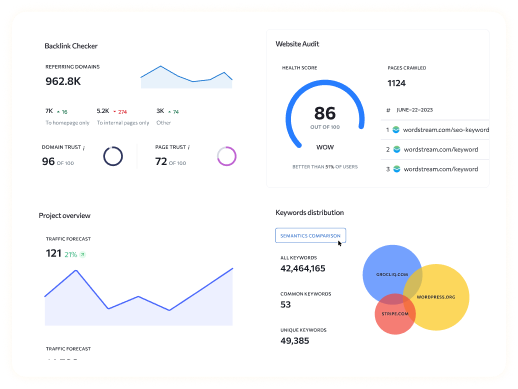The robots.txt file plays a crucial role in controlling how search engines crawl and index your website. However, it’s essential to ensure that your robots.txt file is properly configured to avoid common issues that can negatively impact your website’s SEO performance. Here are 21 common robots.txt issues and how to avoid them:
1. Blocking Important Pages
Issue: Accidentally blocking critical pages, such as the homepage or important category pages, can prevent search engines from accessing and indexing them.
Solution: Review your robots.txt file to ensure that essential pages are not blocked from crawling.
2. Incorrect Syntax
Issue: Syntax errors in the robots.txt file can lead to improper directives, causing search engines to ignore or misinterpret the instructions.
Solution: Double-check the syntax of your robots.txt file to ensure that it follows the correct format and structure.
3. Disallowing CSS and JavaScript Files
Issue: Blocking CSS and JavaScript files can hinder search engine bots from properly rendering and understanding your website’s layout and functionality.
Solution: Allow access to CSS and JavaScript files in your robots.txt file to ensure proper rendering and indexing of your web pages.
4. Allowing Access to Sensitive Content
Issue: Inadvertently allowing search engines to access sensitive or confidential content, such as admin pages or private directories.
Solution: Use the “Disallow” directive to block access to any sensitive content that should not be indexed by search engines.
5. Blocking Image Files
Issue: Blocking image files in the robots.txt file can prevent search engines from indexing images and displaying them in image search results.
Solution: Ensure that image files are not disallowed in the robots.txt file to maximize visibility in image search.
6. Blocking Canonical URLs
Issue: Blocking canonical URLs can result in duplicate content issues and confusion for search engines trying to determine the preferred version of a page.
Solution: Allow crawling of canonical URLs to ensure proper indexing and consolidation of link equity.
7. Overusing Wildcards
Issue: Overuse of wildcard (*) directives in the robots.txt file can inadvertently block unintended pages or directories.
Solution: Use wildcard directives sparingly and with caution, ensuring that they target only the intended URLs.
8. Disallowing Crawlers from Indexing Entire Site
Issue: Disallowing all crawlers from indexing your entire site can result in your website being removed from search engine results altogether.
Solution: Only use the “Disallow: /” directive when absolutely necessary, such as during site maintenance or testing phases.
9. Blocking Mobile Versions of Pages
Issue: Blocking mobile versions of pages can prevent search engines from properly indexing and ranking mobile-friendly content.
Solution: Ensure that mobile versions of pages are accessible to search engine crawlers by not blocking them in the robots.txt file.
10. Allowing Access to Spammy or Low-Quality Directories
Issue: Allowing access to spammy or low-quality directories can result in search engines associating your website with poor-quality content.
Solution: Use the “Disallow” directive to block access to any directories containing spammy or low-quality content.
11. Disallowing Crawlers from Crawling External Links
Issue: Disallowing crawlers from crawling external links can prevent search engines from discovering and indexing valuable backlinks pointing to your site.
Solution: Allow crawling of external links to ensure that search engines can follow and index them.
12. Blocking Search Engine Crawlers
Issue: Accidentally blocking search engine crawlers from accessing your site’s content can result in your website being completely deindexed.
Solution: Double-check your robots.txt file to ensure that it does not contain any directives that block search engine crawlers.
13. Not Updating the Robots.txt File Regularly
Issue: Failing to update the robots.txt file regularly can lead to outdated directives that no longer reflect the current structure of your website.
Solution: Review and update your robots.txt file regularly to accommodate any changes to your website’s structure or content.
14. Blocking Sitemap Files
Issue: Blocking access to sitemap files in the robots.txt file can prevent search engines from efficiently crawling and indexing your website’s pages.
Solution: Ensure that sitemap files are accessible to search engine crawlers by not blocking them in the robots.txt file.
15. Overlooking HTTPS Versions of Pages
Issue: Overlooking HTTPS versions of pages in the robots.txt file can result in search engines indexing non-secure versions of your content.
Solution: Include directives for both HTTP and HTTPS versions of your pages in the robots.txt file to ensure consistent indexing.
16. Blocking Crawlers from Indexing JavaScript-Rendered Content
Issue: Blocking crawlers from indexing JavaScript-rendered content can prevent search engines from accessing and understanding important elements of your website.
Solution: Allow access to JavaScript-rendered content to ensure proper indexing and ranking in search results.
17. Ignoring International Versions of Pages
Issue: Ignoring international versions of pages in the robots.txt file can result in search engines failing to properly index and rank localized content.
Solution: Ensure that international versions of pages are accessible to search engine crawlers by not blocking them in the robots.txt file.
18. Disallowing Crawlers from Indexing Blog Tags or Categories
Issue: Disallowing crawlers from indexing blog tags or categories can limit the visibility of your content in search results and hinder user navigation.
Solution: Allow access to blog tags and categories to ensure that relevant content is properly indexed and accessible to users.
19. Allowing Access to Test or Staging Environments
Issue: Allowing search engines to access test or staging environments can result in duplicate content issues and confusion for users and search engines.
Solution: Use the “Disallow” directive to block access to any test or staging environments that should not be indexed by search engines.
20. Not Utilizing Robots Meta Tags
Issue: Failing to utilize robots meta tags alongside robots.txt directives can result in conflicting instructions for search engine crawlers.
Solution: Use robots meta tags to provide additional instructions to search engine crawlers, supplementing the directives in the robots.txt file.
21. Incorrectly Formatting Comments in the Robots.txt File
Issue: Incorrectly formatting comments in the robots.txt file can lead to confusion and misinterpretation of directives by search engine crawlers.
Solution: Follow the correct syntax for adding comments in the robots.txt file to ensure clarity and avoid potential errors.
FAQs about Robots.txt Issues
Q: Can I use wildcards (*) in the robots.txt file?
A: Yes, wildcards (*) can be used to match multiple URLs in the robots.txt file. However, it’s essential to use them judiciously to avoid inadvertently blocking unintended pages or directories.
Q: How often should I review and update my robots.txt file?
A: It’s recommended to review and update your robots.txt file regularly, especially after making changes to your website’s structure or content. Quarterly audits are a good practice to ensure that your directives remain accurate and up-to-date.
Q: What happens if I accidentally block search engine crawlers from accessing my site?
A: Accidentally blocking search engine crawlers from accessing your site can result in your website being removed from search engine results pages (SERPs). It’s crucial to double-check your robots.txt file to ensure that it does not contain any directives that block access to essential pages or content.
Q: Can I use robots.txt to hide sensitive information from search engines?
A: While robots.txt can be used to block search engine crawlers from accessing certain pages or directories, it’s essential to note that it does not provide security for sensitive information. For confidential or sensitive content, additional security measures such as password protection or encryption should be implemented.
Q: How can I test if my robots.txt file is properly configured?
A: You can use various online tools and validators to test the validity and effectiveness of your robots.txt file. These tools can help identify any syntax errors or issues that may prevent search engine crawlers from properly interpreting the directives.



